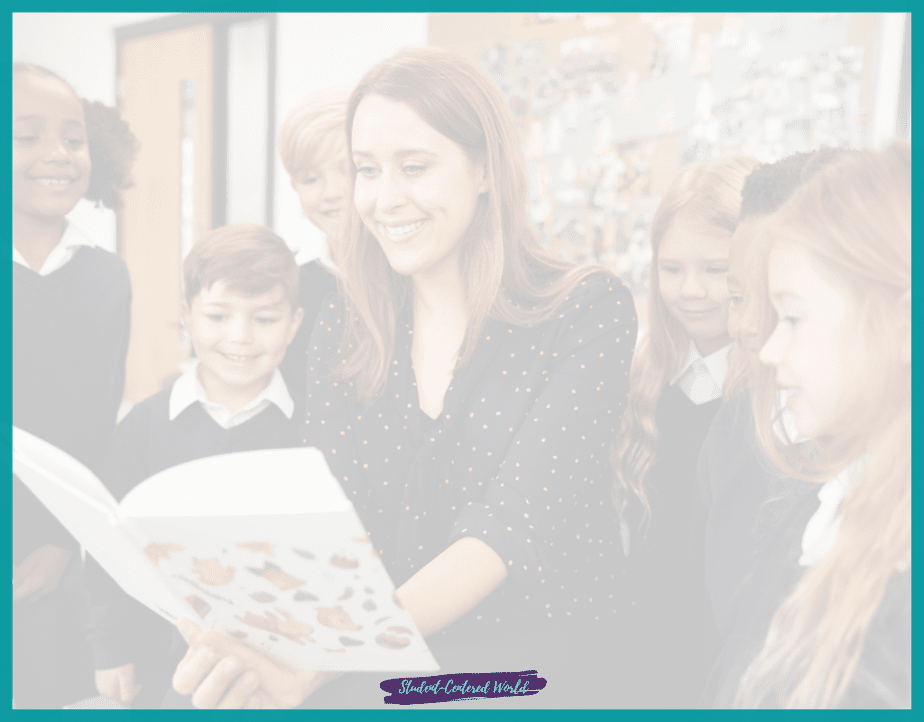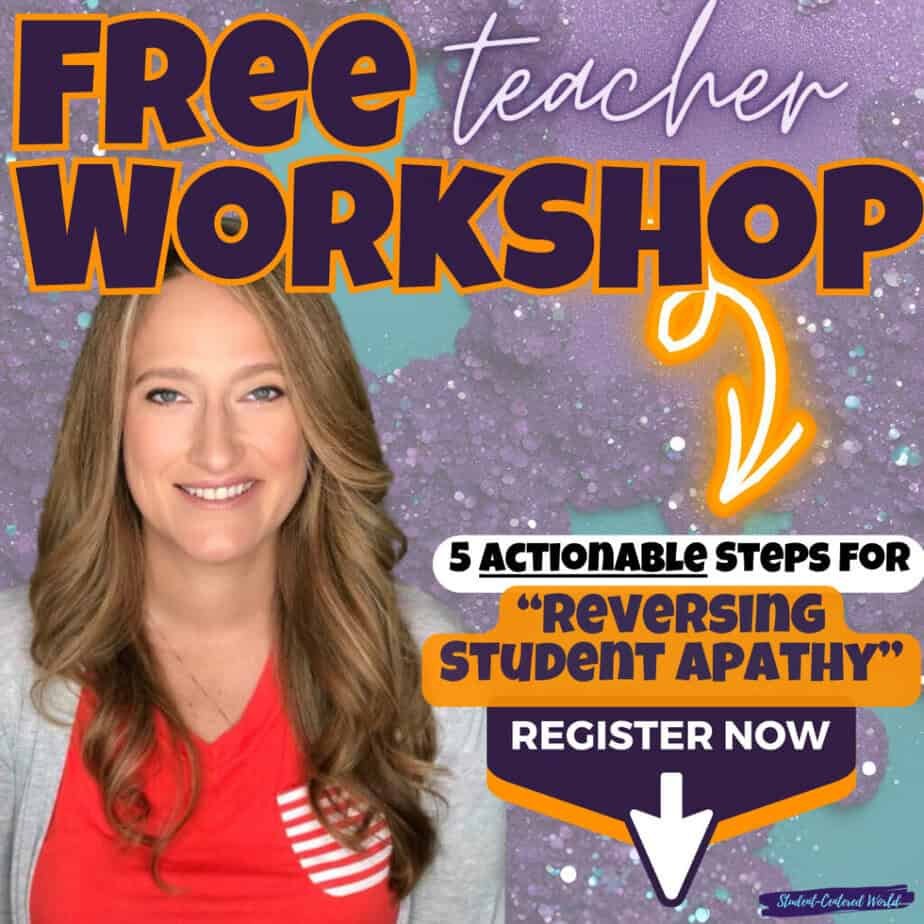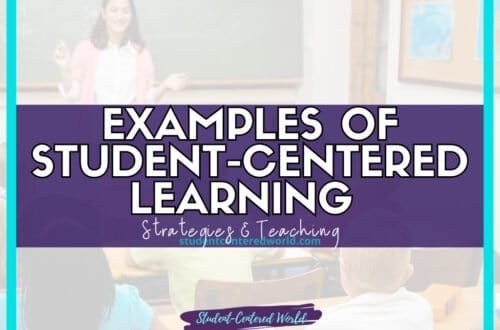Building a Student-Centered Classroom (with Examples)
A student-centered classroom is an educational approach that places students at the center of the learning experience. Unlike the traditional teacher-centered approach, where the teacher is the primary source of knowledge and students are passive recipients, a student-centered learning environment encourages students to take an active role in their education.
This shift is particularly beneficial for Generation Z and Generation Alpha students, who thrive in dynamic, interactive, and technology-rich settings. In these environments, students are empowered to explore their interests, engage in problem-solving activities, and collaborate with peers. This approach not only enhances academic achievement but also fosters critical thinking, creativity, and a lifelong love of learning, preparing students for success in an ever-evolving world.
The benefits of student-centered learning have been mounting over the past several years. Evidence shows that it significantly improves student engagement, enhances critical thinking skills, fosters a deeper understanding of the material, and better prepares students for real-world challenges by developing their problem-solving abilities and encouraging lifelong learning.
Enhancing the Learning Experience
In a student-centered classroom, the learning experience is tailored to meet the diverse needs of individual students. This personalized approach ensures that each student can learn at their own pace and follow their unique learning journeys. By focusing on the interests of the student, educators can foster a love of learning and help students develop critical thinking skills.
The emphasis on student choice and voice in the classroom empowers students to take charge of their own learning and explore new ideas. Choice boards are a powerful way to offer varied learning paths, allowing students to select activities that resonate with their learning preferences.
Promoting Student Engagement
Student engagement is a key component of student-centered instruction. By incorporating project-based learning and inquiry-based learning, educators can create a learning environment that is both stimulating and relevant to real-world challenges. These instructional approaches encourage students to work on ongoing projects and solve complex problems, making learning more meaningful and engaging.

The use of choice boards allows students to make decisions about their learning activities, further enhancing their engagement and motivation. Engaged students are more likely to retain information and develop a deeper understanding of the material, leading to better academic outcomes.
Developing Important Skills
A student-centered classroom helps students develop a wide range of important skills that are essential for success in the 21st century. Collaborative learning and group work promote communication skills and teamwork, while problem-based learning and case studies enhance problem-solving skills and critical thinking.
By participating in interactive activities and real-world projects, students become active participants in their education and develop self-directed learning skills. This approach prepares students to navigate complex problems and adapt to new situations, which are crucial skills in today’s fast-paced world.
Supporting Different Learning Needs
One of the key benefits of a student-centered classroom is its ability to accommodate the distinct learning needs of individual students. By using various instructional strategies and learner-centered teaching methods, educators can address the unique strengths and challenges of each student. This approach ensures that all students, regardless of their learning style or background, have the opportunity to reach their full potential.
Differentiation is a hallmark of student-centered methods, where instructional approaches are tailored to the individual needs of each student, promoting equity and inclusivity in the classroom.
Building Strong Relationships
A student-centered learning environment fosters strong relationships between students and teachers. By creating a classroom setting that is based on mutual respect and trust, educators can establish a positive and supportive learning space. This environment encourages students to feel comfortable expressing their thoughts and ideas, leading to a more collaborative and inclusive classroom culture.

Strong relationships between students and teachers enhance student motivation and engagement, as students feel valued and understood. Teachers act as facilitators and guides, supporting students as they navigate their learning journeys.
Leveraging Educational Technology
Generation Z and Generation Alpha students are digital natives who are comfortable using technology in their everyday lives. A student-centered classroom leverages educational technology to enhance learning and provide access to online resources. Free web tools and social media platforms can be integrated into the curriculum to support collaborative learning and provide additional opportunities for students to engage with the material.
Educational technology also allows for the use of innovative instructional approaches, such as flipped classrooms and blended learning, which can enhance the overall learning experience.
Fostering Lifelong Learning
The learner-centered approach in a student-centered classroom promotes lifelong learning by encouraging students to take an active role in their education. By developing self-directed learning skills and a love of learning, students are better prepared to adapt to new challenges and continue learning throughout their lives.
This approach aligns with the mission of organizations like the Nellie Mae Education Foundation, which advocates for student-centered learning as a way to prepare students for future success. Lifelong learning is critical in a rapidly changing world, where continuous learning and adaptability are essential for personal and professional growth.
Implementing Best Practices
Educators who adopt student-centered teaching methods are implementing best practices that have been shown to improve student outcomes. By focusing on the interests and needs of individual students, teachers can create a more engaging and effective learning environment.
The use of student-centered methods, such as project-based learning, inquiry-based learning, and problem-based learning, helps students develop the skills they need to succeed in high school, higher education, and beyond. These methods are supported by research and best practices in education, making them powerful tools for enhancing student learning.
Adapting to the Modern Classroom
The modern classroom is evolving, and student-centered approaches are at the forefront of this transformation. Rows of desks and traditional classroom setups are being replaced with flexible learning spaces that promote collaboration and active learning.

By embracing these changes, educators can create a more dynamic and responsive learning environment that meets the needs of Generation Z and Generation Alpha students. Flexible learning spaces allow for different configurations and setups, facilitating various instructional strategies and learning activities.
Real-World Applications
Student-centered classrooms prepare students to tackle real-world challenges by providing opportunities for them to engage in real-world projects and case studies. This type of learning helps students see the relevance of their education and develop the skills needed to succeed in a rapidly changing world.
By focusing on practical applications and hands-on learning, educators can help students connect their classroom experiences to their future careers and goals. Real-world learning experiences make education more meaningful and help students develop a sense of purpose and direction.
Encouraging Student Agency
Student agency is a central concept in student-centered learning. By giving students more control over their learning, educators can help them become more independent and self-motivated. This approach encourages students to take ownership of their education and develop the confidence to pursue their interests and goals.
By fostering a sense of agency, teachers can help students become more proactive and engaged learners. Student agency empowers students to make decisions about their learning and take responsibility for their educational outcomes.
Conclusion
A student-centered classroom offers numerous benefits for Generation Z and Generation Alpha students. By creating a learning environment that prioritizes student engagement, individual needs, and active participation, educators can help students develop important skills and a love of learning. The use of educational technology and innovative instructional approaches ensures that students are well-prepared to meet the challenges of the future.
By embracing student-centered methods, teachers can create a more dynamic, inclusive, and effective learning environment that supports the diverse needs of today’s students. This approach not only enhances academic achievement but also prepares students for lifelong learning and success in a rapidly changing world.
Stop Driving the Teacher Struggle Bus
Are you struggling with student engagement, apathy, or keeping your class on track?
💫💫 There’s hope! 💫💫
If you’re ready to take the first step towards reviving student engagement and transforming your classroom, I invite you to join me for my free workshop “Reversing Student Apathy” designed to equip educators with innovative strategies that work.
This free teacher workshop offers educators a valuable opportunity to explore and address student apathy. By examining its causes and discussing strategies, participants will learn how to make meaningful changes in their teaching methods that are actually working. The sessions are engaging and collaborative, allowing educators to share experiences and develop a collective approach to improving student engagement.
Highlights include:
- Understanding the roots of student apathy and its impact.
- Strategies for enhancing classroom dynamics.
- The importance of educator-student relationships.
- Innovative teaching approaches for today’s students.
By the end of the workshop, you will not only understand what you need to accomplish to stabilize the 4 pillars of your classroom, but you will also walk away with 5 tangible ideas to try in the classroom the very next day.
Join today to be part of the solution to reigniting student enthusiasm and engagement.






